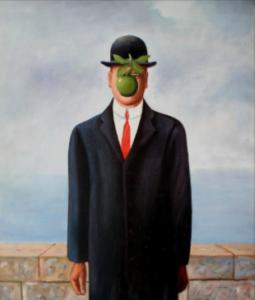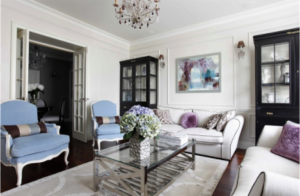Do you have no idea how to incorporate a particularly sentimental painting into a new interior? Or do you simply want to beautify your home? We spoke with an expert in this field and learned what to do in such a situation.
The painting is stunning. This is a small life, or at least a small portion of one, constrained by the framework of a baguette. As a result, it is critical to approach the use of paintings in the interior with caution in order to avoid transforming your home from a cozy nest into a museum, where a person will be surrounded by a massive amount of unnecessary information.
WHEN DOES IT BECOME CLEAR THAT YOU CAN’T DO WITHOUT INTERIOR PAINTING?
Even at the design stage, this becomes clear. If customers have their own works that have been donated or inherited and are important to them as a memory, the question of how and where they should be organically inscribed arises even before the project is created. It is clear where the interesting viewpoints are located and which of the customer’s paintings can be placed there during the design stage. Furthermore, the selection of colors and materials can influence the decision. For example, the location will remain the same, but the image will change. The final stage of interior design is a 3D sketch, which usually only serves to confirm that the location was chosen correctly.
HOW DO I SELECT PAINTINGS? IS IT TRUE THAT CERTAIN INTERIOR ELEMENTS ARE CHOSEN FOR CERTAIN PAINTINGS?
There are several criteria for selection. The vector of the direction in which the work will be carried out is determined by the given style, the color scheme of the interior, and even the location. Will it be one large image or two medium images, vertical or horizontal, colorful or monochrome? However, there are times when a painting has already been purchased, for example, spontaneously at an art exhibition, and you need to find an ideal location for it in the interior. Again, it is best to consider this during the design stage. You can choose the graphics and color of the carpet, the upholstery of the sofa, sew pillows, and strengthen or weaken its color using the color scheme of the walls under the image.

HOW OFTEN DO YOU HAVE TO ORDER A PAINTING FOR A SPECIFIC INTERIOR?
Commissioned paintings can be found in each of my interiors. The painting should become a natural part of the interior design, and it should be liked not only by the designer but also by the customer.
If the customer is not a collector, the design will be approached from the standpoint of an internal understanding of beauty — like or dislike. If there is an internal rejection of it, you will not be able to look at a very expensive and stylish picture every day, even if it is perfectly fitted into the interior. As a result, all of my clients are involved in the process of selecting paintings for their homes’ interiors.
SHOULD THE PAINTING BE ONE OF THE KEY ACCENTS IN THE INTERIOR OR SHOULD IT BECOME PART OF IT WITHOUT DISTURBING ATTENTION?

Everything is determined by the image itself. If it is large and prominently displayed in the living room, then it is, without a doubt, the focal point. And if we have a series of small-scale works that hang in the passage area on the stairs or in the corridor, this is already part of the interior, and the paintings serve as filling the space or maintaining a certain semantic line in the interior, rather than as an accent. For example, the upper line formed by the corridor’s doorways.
IN WHICH CASE WILL THE IMAGE BE OBVIOUSLY SUPERFLUOUS IN THE INTERIOR?
I’ve never seen such interiors where a photograph would be impossible to fit. A painting, photograph, or poster can be used to decorate the interior of any style. A painting may be unnecessary if there is no place for it to serve as a decorative element or if the walls are already overcrowded with other decor, such as stucco. The painting may also be unnecessary if the decor already includes a specific pattern on the wallpaper or wall painting, but this only means that a suitable location was not originally chosen and created for the painting.
AN ILLUSTRATIVE EXAMPLE IS IT POSSIBLE TO INTEGRATE ANY OF THE PAINTINGS, FOR EXAMPLE, BOTTICELLI, INTO A RESIDENTIAL INTERIOR WITHOUT TURNING IT INTO A MUSEUM HALL?
If we are not discussing an interior with a clear emphasis on classics, such as a generic French chateau or the interior of an art collector, where a native environment has been created for painting, then such a picture in our time’s interiors can be perceived as a bright accent or provocation, as “modern art.” Botticelli’s painting would look great in an industrial loft.
A Renaissance painting in a massive carved and gilded frame on a concrete wall is no longer considered modern art, but rather a fad. You can also design a gallery-style space for her, with the wall acting as a canvas on which you can write whatever the designer’s imagination allows. For example, if you hang this image on a completely white wall, the effect will be the same.
My friends, if you want to decorate your apartment or house with beautiful paintings but don’t have a lot of money, I recommend buying prints on canvas – they’re cheap and of high quality. Your guests are unlikely to be able to tell the difference between a good print and an original painting.